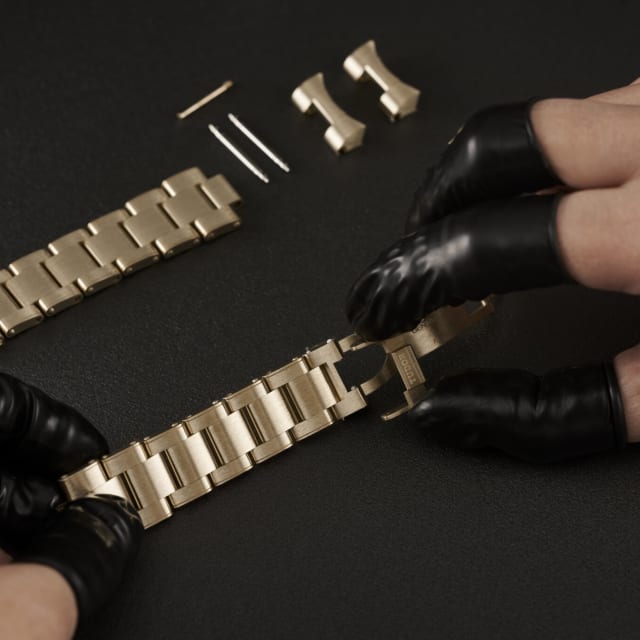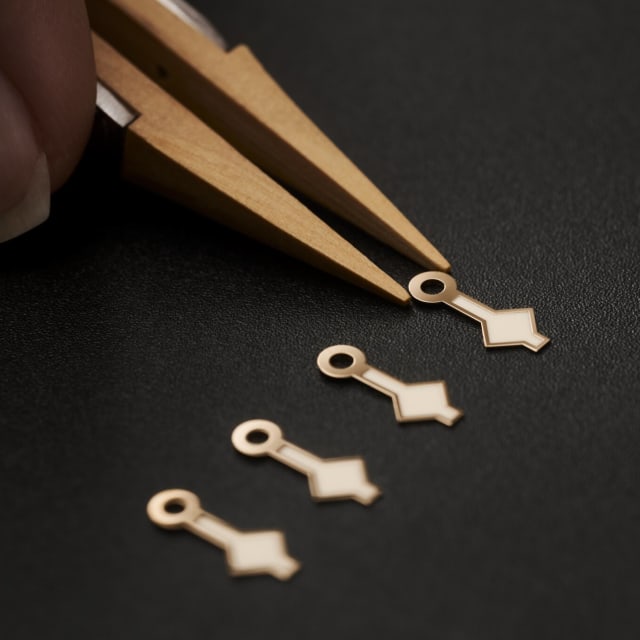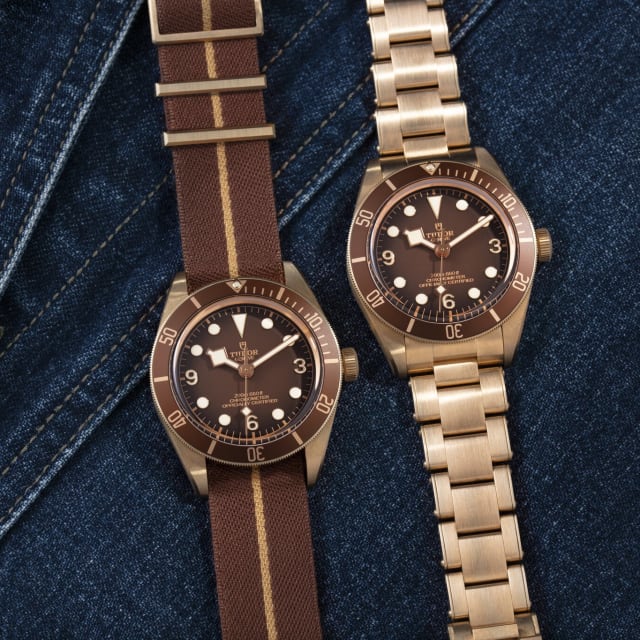These 1950s Ads Shed Light On TUDOR’s Guiding Principles
The “Trial of Destruction” as campaign tells you everything you need to know about what drives TUDOR to make the toughest watches possible.
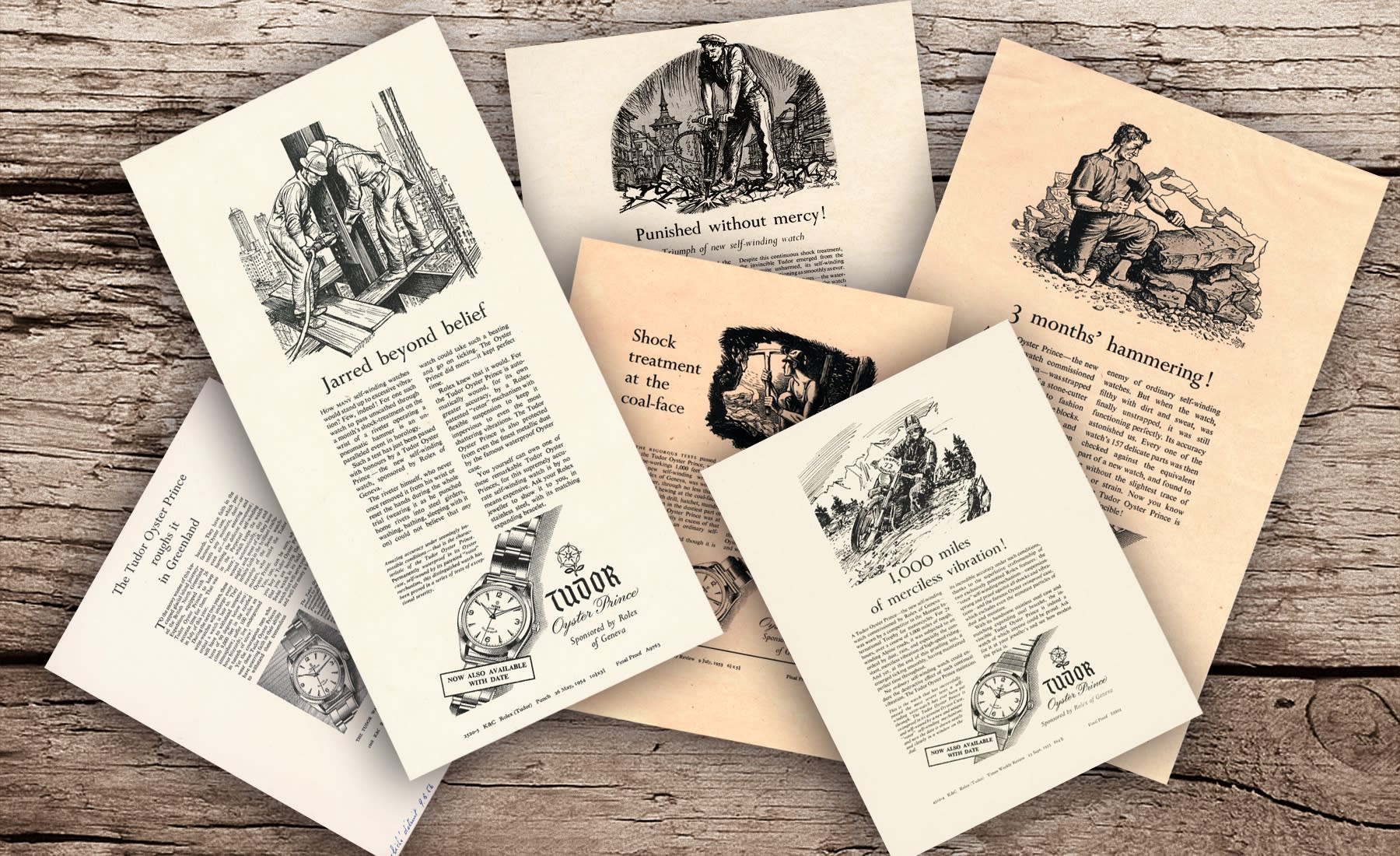
From the very beginning, TUDOR has valued making watches that are both beautiful and robust. Just one decade after the brand’s founding in 1926, Hans Wilsdorf began using the joint symbols of the Tudor rose inscribed within a shield to represent this special duality, the union of strength and grace. And it is these complementary characteristics that have served as the brand’s guiding light ever since, all the way up to the present day.
In 1952 though, TUDOR would have the opportunity to put its watches to the ultimate test, on the wrists of explorers carrying out the British North Greenland Expedition. Led by Commander James Simpson, the expedition saw 30 men undertake scientific studies in a treacherous, remote area well above the Arctic Circle. Accompanying them were 26 TUDOR Oyster Prince watches, crucial instruments for both the safety of the scientists and the execution of their missions.
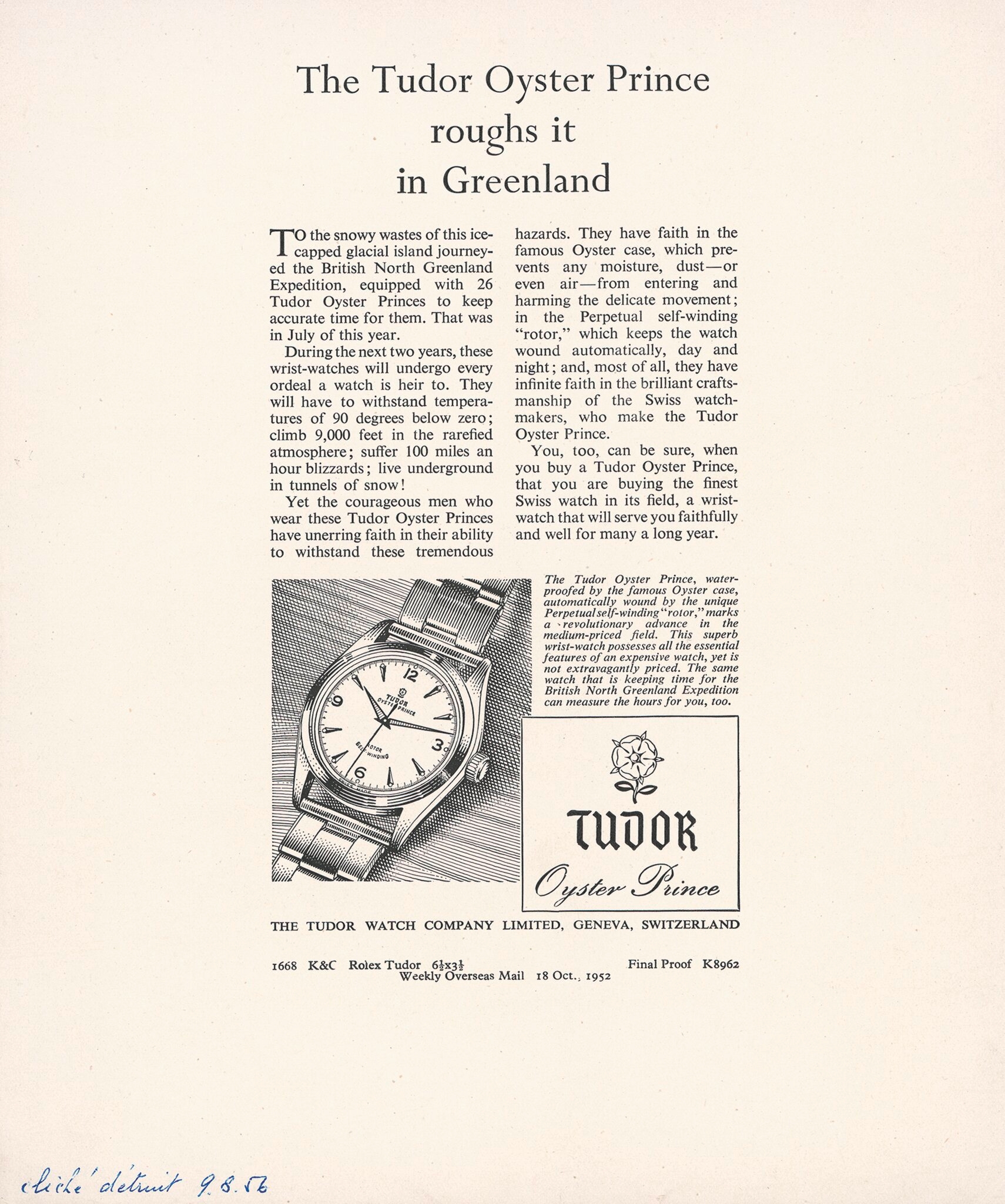
As one TUDOR advertisement from 1952 put it, “these wrist-watches will undergo every ordeal a watch is heir to. They will have to withstand temperatures of 90 degrees below zero; climb 9,000 feet in the rarefied atmosphere; suffer 100 miles an hour blizzards; live underground in tunnels of snow!” At the time, the Oyster Prince was new and the British North Greenland Expedition, with its punishing and unrelenting conditions, provided the perfect opportunity to see how much these watches could truly stand. Inside TUDOR, there was a prevailing attitude that the best way to improve a product was to field test it with professionals who would push the product to the extremes. In-house testing was thorough, but the physical limitations of the testing process meant it could only go so far. In order to continuously produce a superior watch, it would be subjected to the harshest environments in the world, Greenland’s arctic among them.
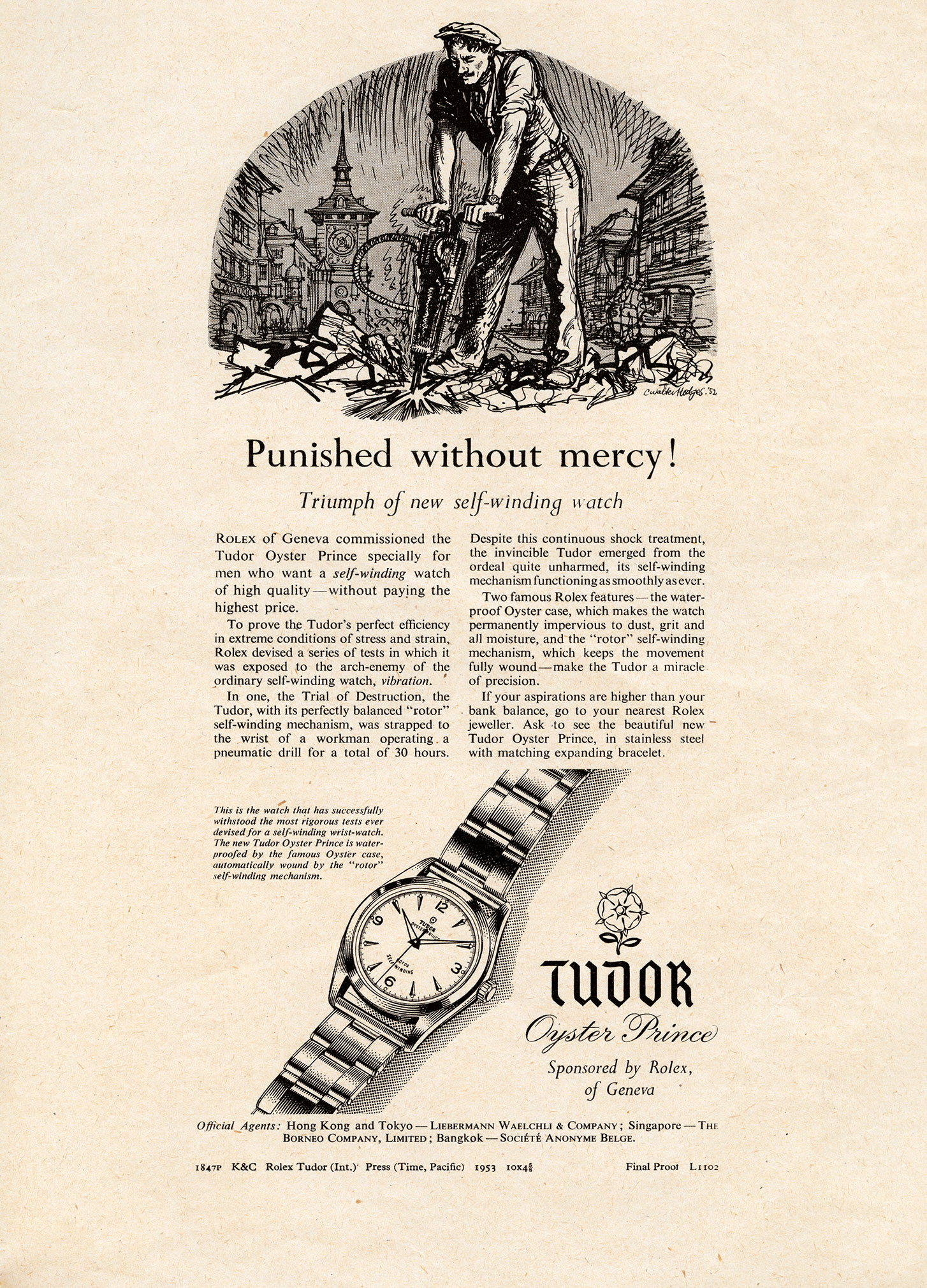
The good news is that the watches survived, with their 34mm stainless steel Oyster cases, Perpetual automatic movements, and white dials with luminous hands and markers serving the explorers well during their two-year mission. In fact, one of the watches has survived to this day and now resides in TUDOR’s archive in Geneva.
This approach to testing watches was deemed “Trial of Destruction” and served both as a model for research and development and as a concept for advertising watches to those who might not be spending their next two years in freezing, perilous conditions. Put it this way: if a watch can survive Greenland’s arctic, then it could withstand whatever an “average” consumer would put it through.
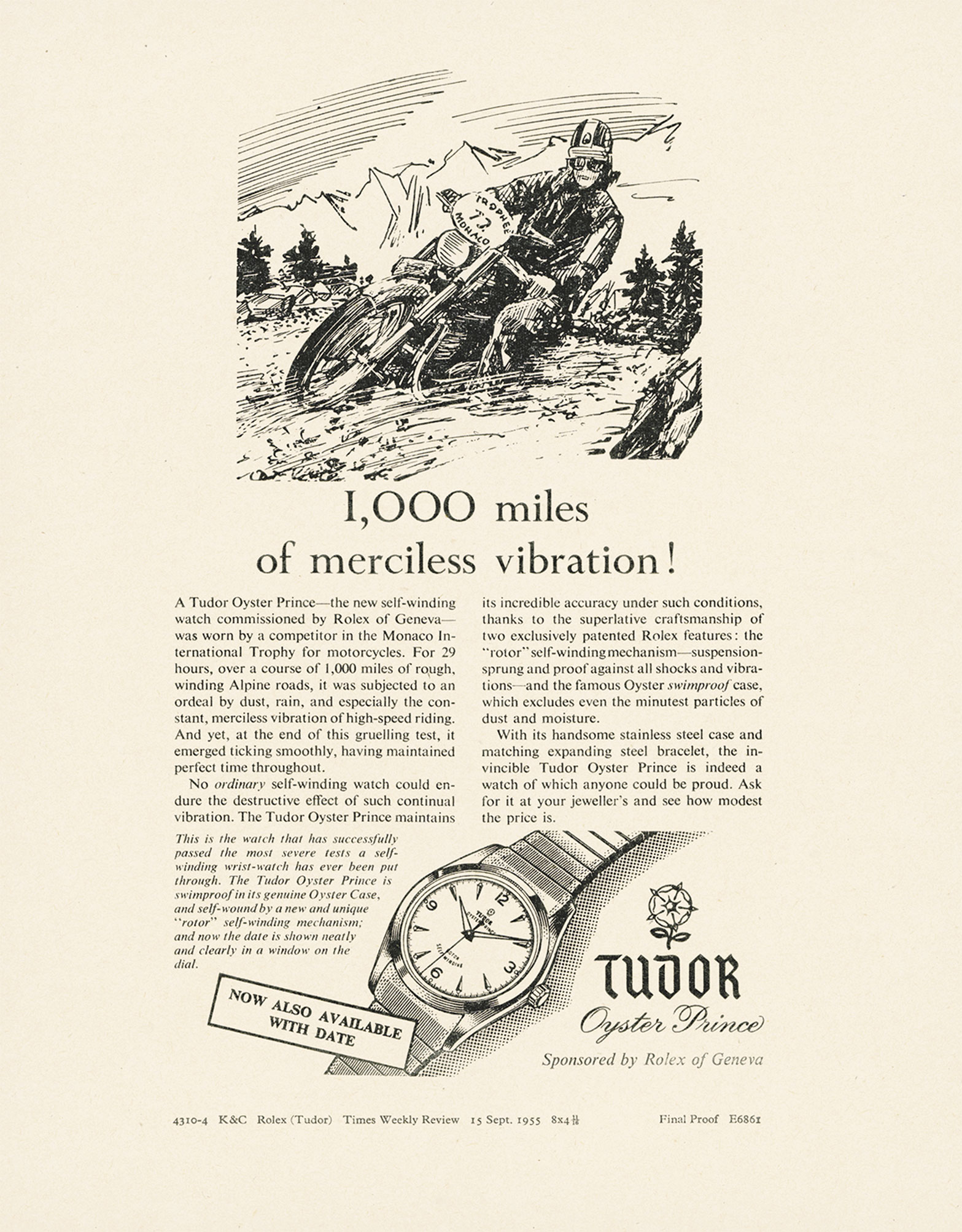
“Trial of Destruction” was born from one of TUDOR’s guiding principles: Create watches for people who weren’t precious with their tools. From blue-collar workers to field scientists, if you put your watch up against unfavorable conditions, the TUDOR on your wrist could handle it, and then some.
Other “Trial of Destruction” campaigns highlighted things like the Monaco International Trophy for motorcycle racing, touting the TUDOR Oyster Prince’s ability to withstand “1,000 miles of merciless vibration!” that “no ordinary self-winding watch could endure” as well as “3 months’ hammering” from a stone-cutter who “never once removed” his Oyster Prince during week after week of uninterrupted work.
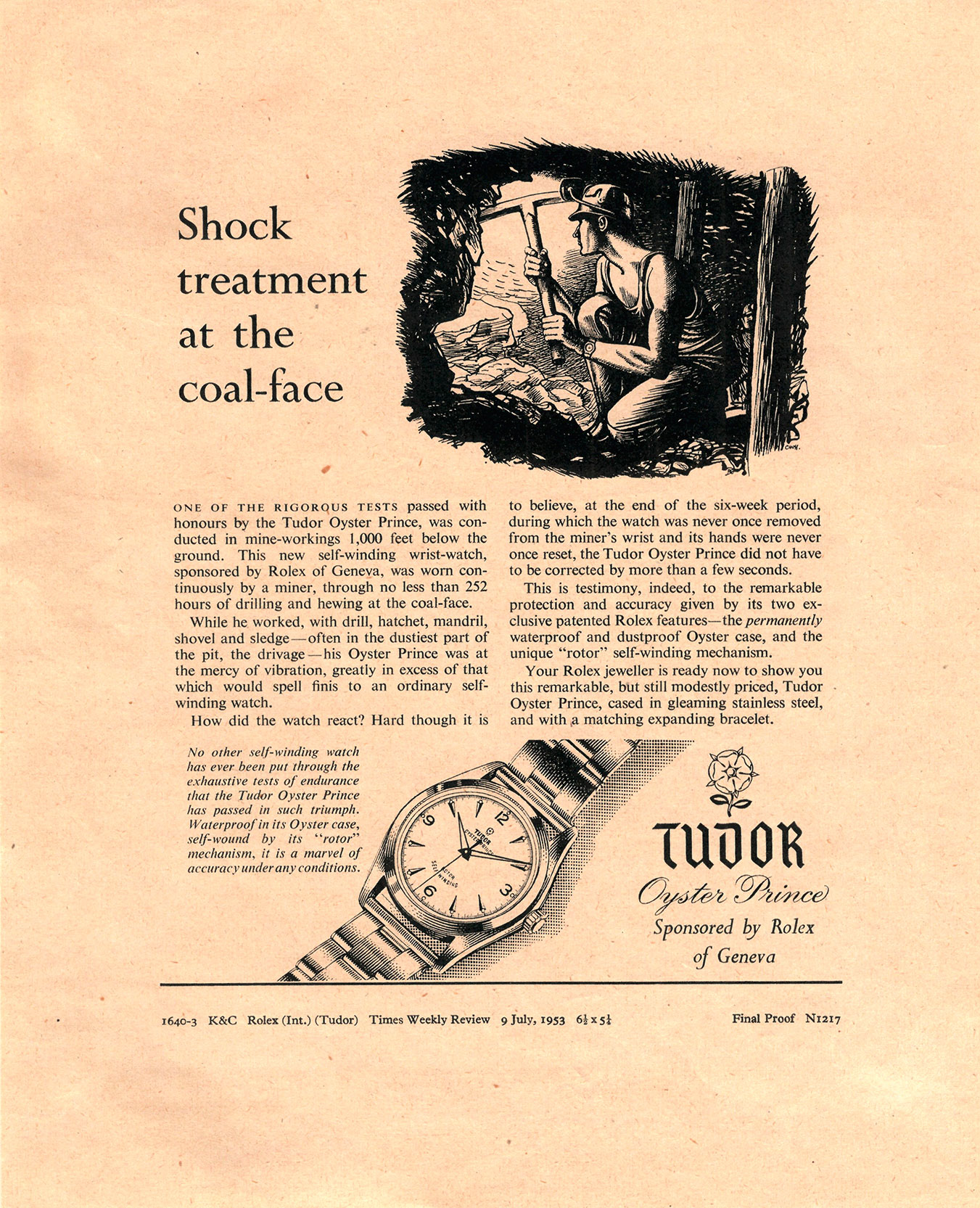
Some of the campaigns went to great lengths to detail the specific conditions under which the TUDOR watches had been tested. In one 1953 advertisement with the headline “Shock treatment at the coal-face,” the reader learns that a self-winding Oyster Prince watch was placed on the wrist of a coal miner working 1,000 feet below the ground for no less than 252 hours of drilling and hewing at the coal-face, specifically to test for resistance to vibrations. An advertisement from the following year, 1954, continued the story, this time up in the sky on the wrists of riveters building skyscrapers. “Wearing it as he punched home rivets into steel girders, washing, bathing, sleeping with it on,” the riveter “could not believe that any watch could take such a beating and go on ticking. The Oyster Prince did more – it kept perfect time.”
The idea was clear: Whether you were exploring the arctic, mining coal, racing motorcycles – or doing something far less physically demanding – the TUDOR Oyster Prince was battle-tested and up for the challenge.
And now, more than half a century later, this ethos is still at the core of every TUDOR watch. From dedicated sport watches like the Black Bay Pro and Pelagos to more classic designs such as the 1926 and Style collections, every TUDOR watch is designed to withstand anything thrown its way – and a whole lot more.

